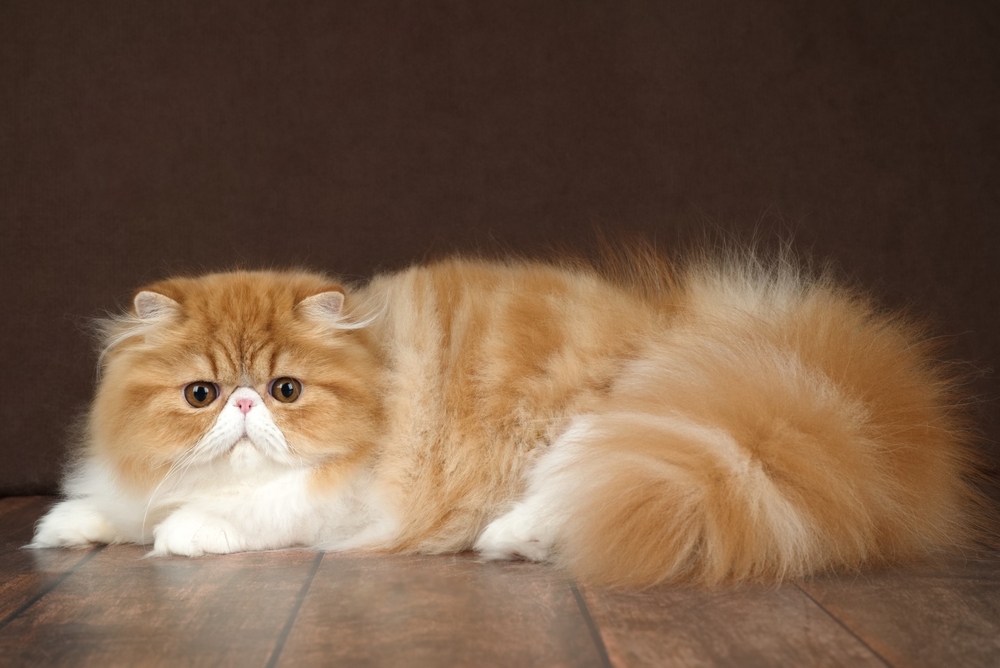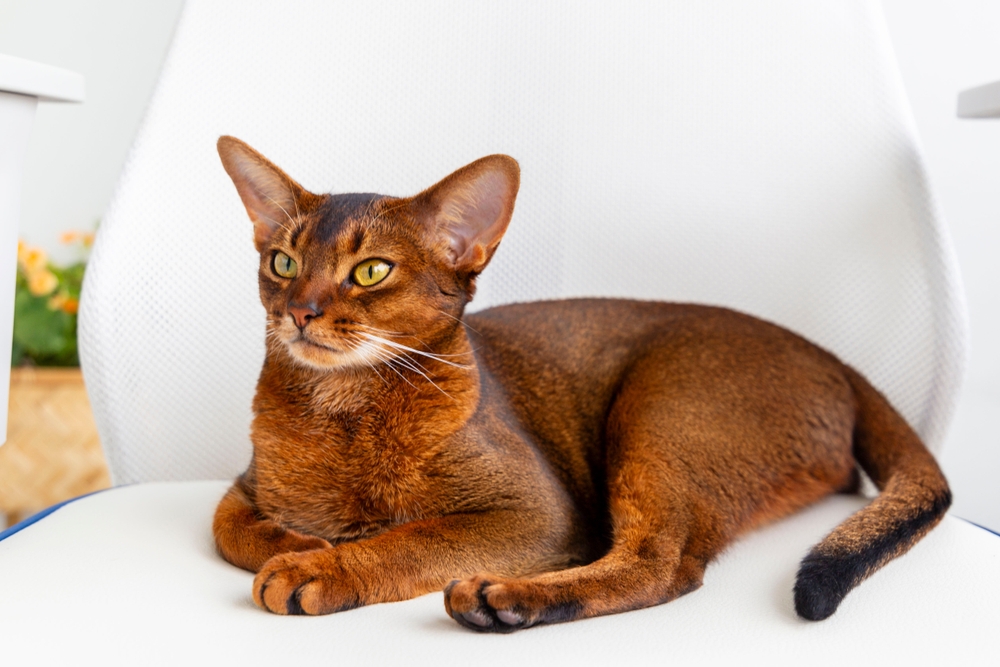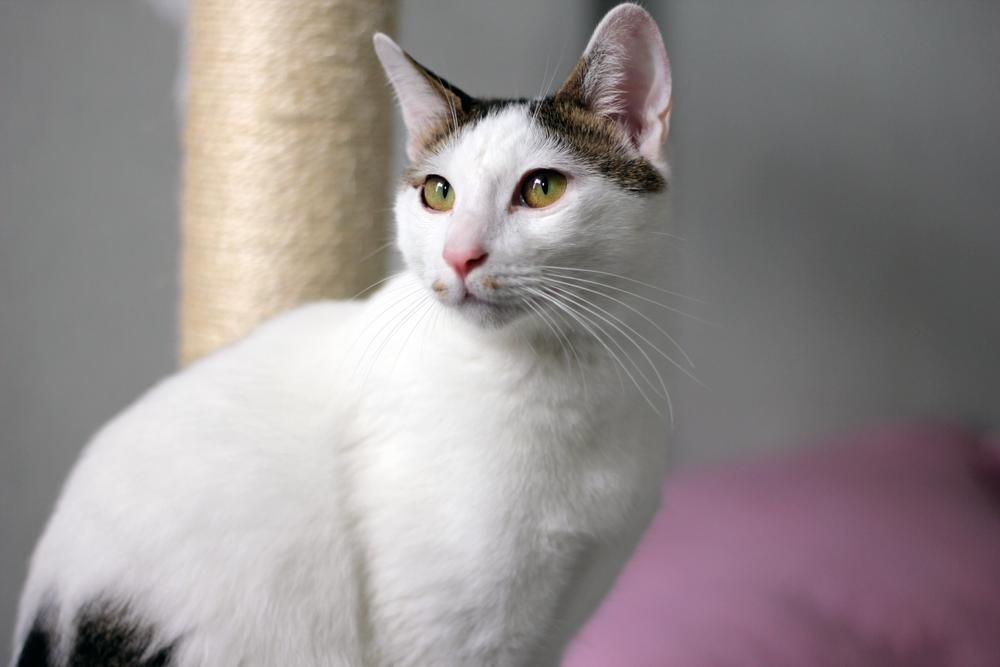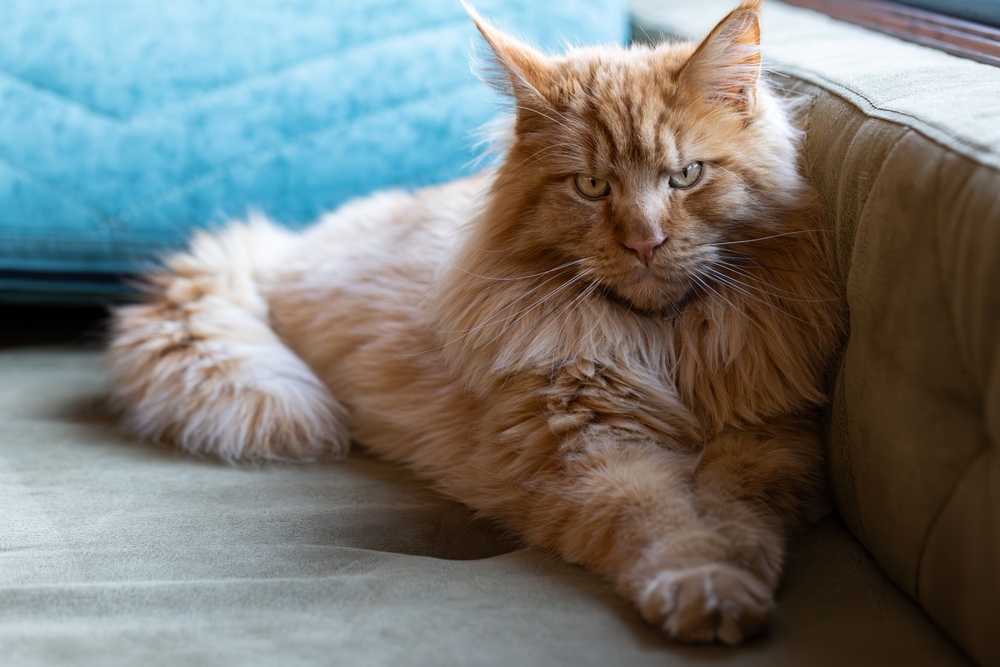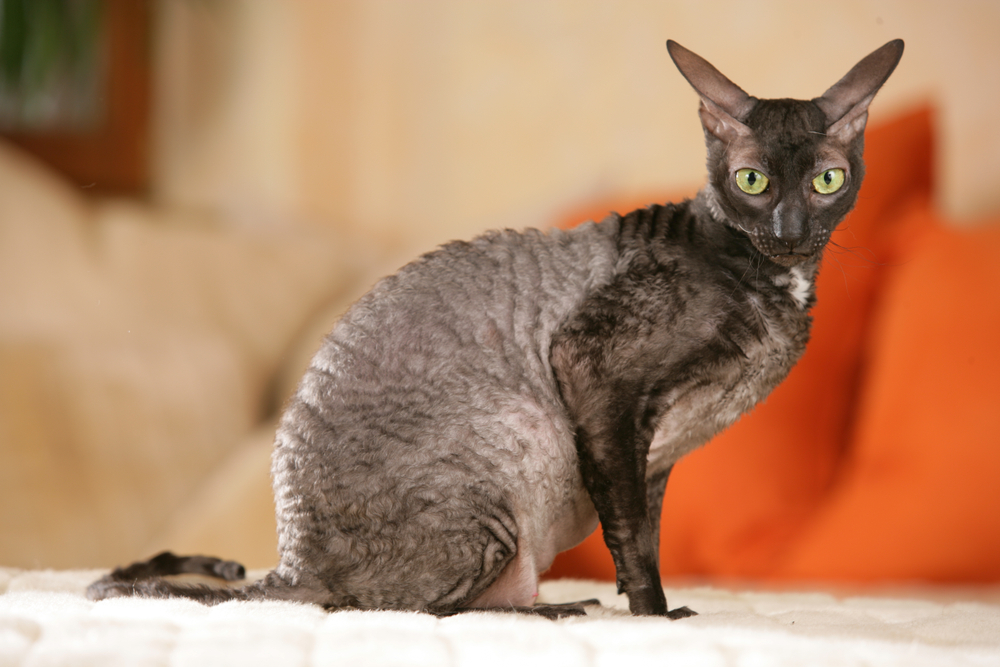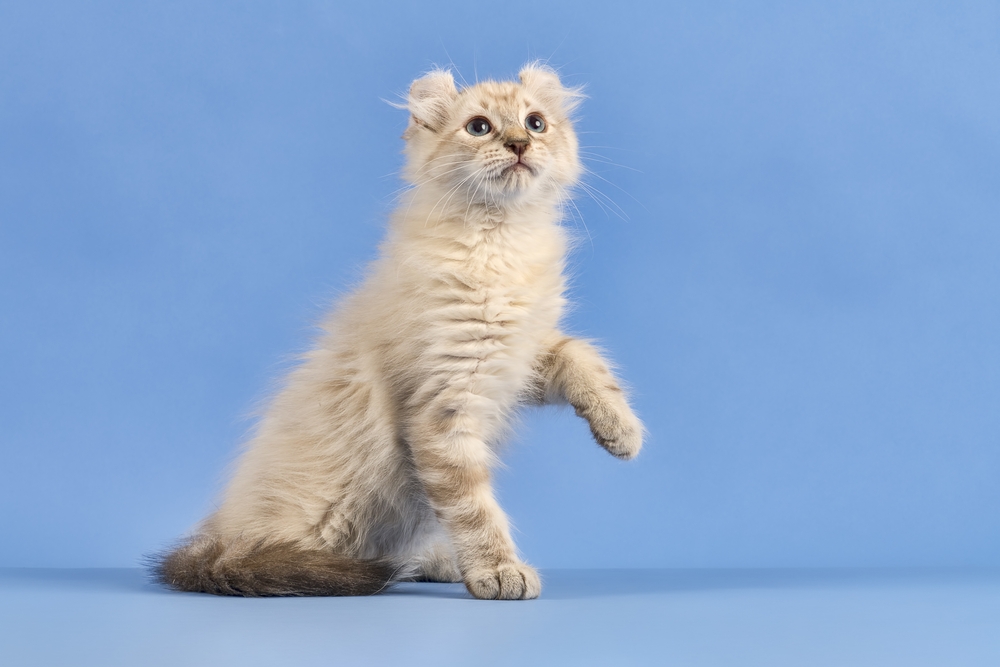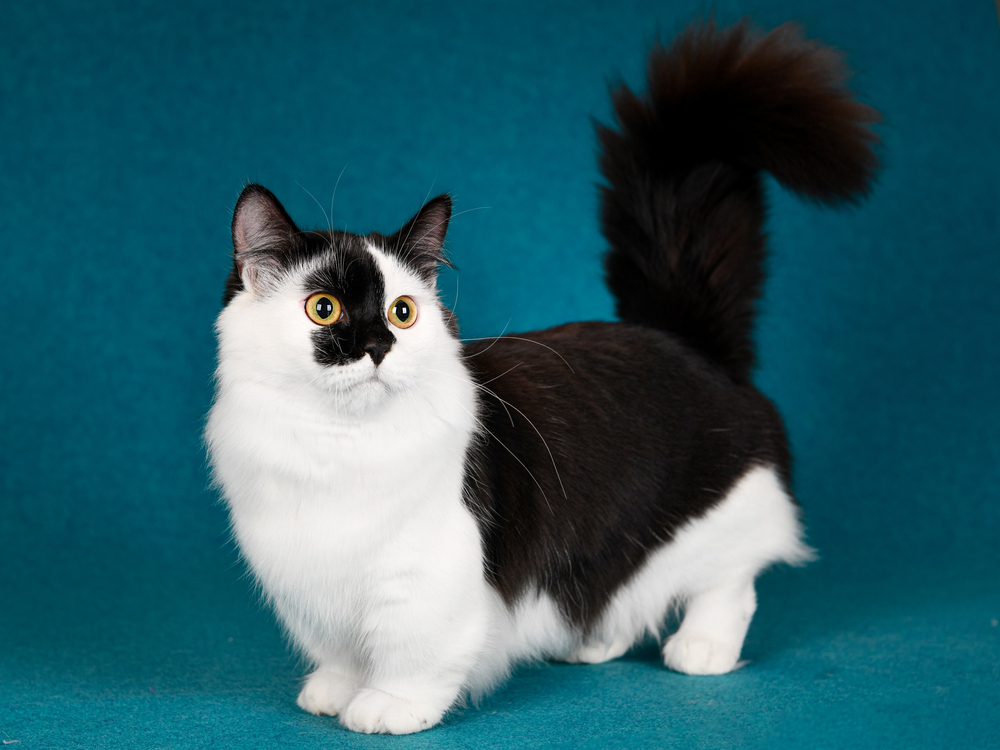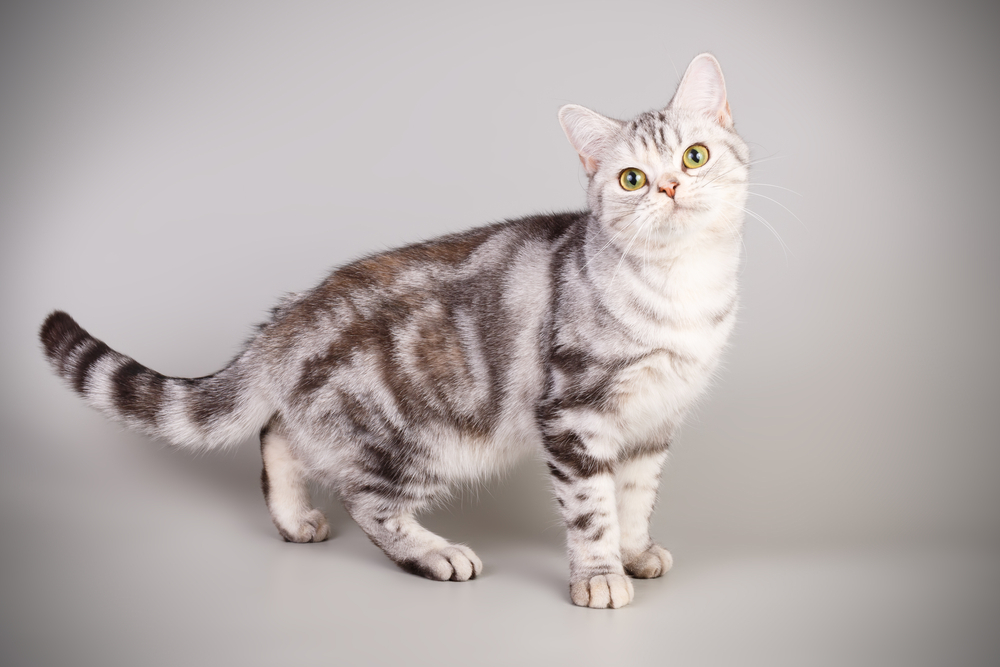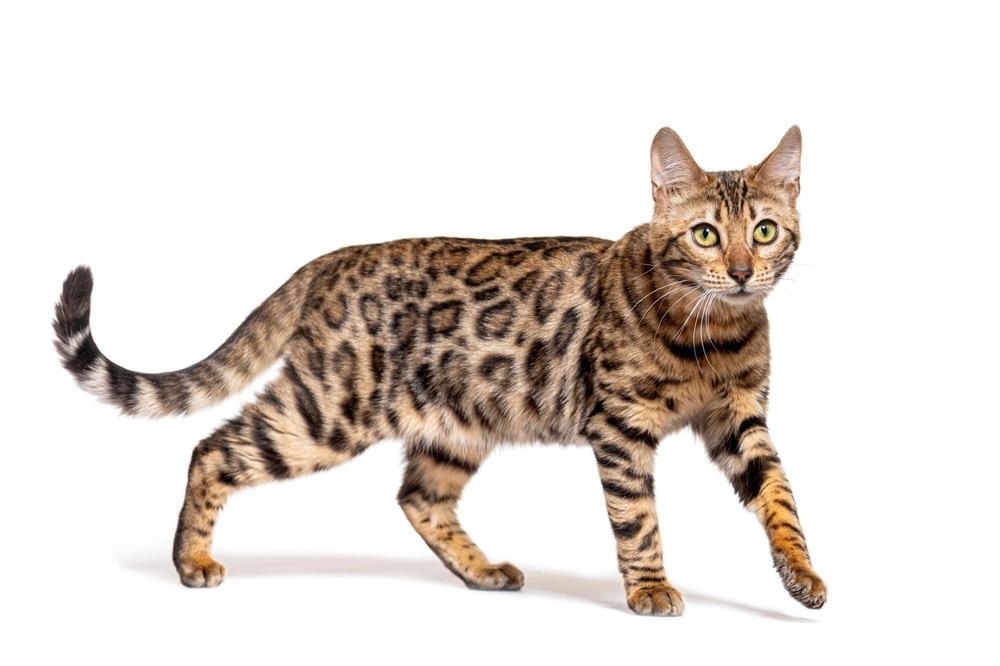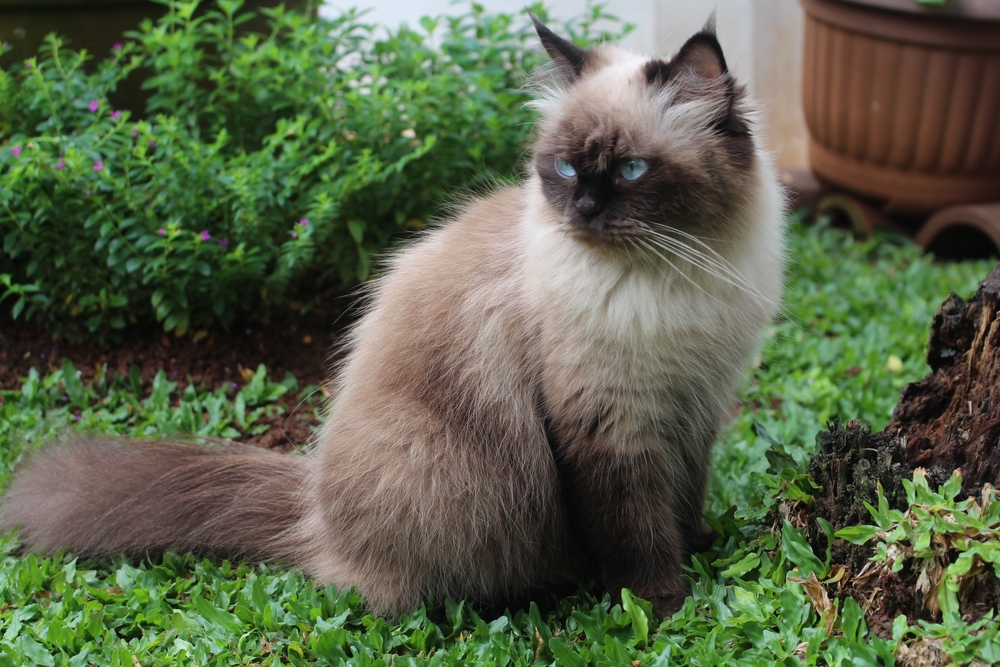The Persian is most closely related to the Himalayan (a Persian–Siamese cross with point coloring) and the Exotic Shorthair (a shorthaired Persian variant). In terms of wild relatives, Persians share physical similarities with the Pallas’s cat (Manul) of Central Asia, which has a long, dense coat and a rounded face suited for cold environments.
About
The Persian cat is one of the most iconic and elegant breeds in the world, admired for its luxurious coat, calm temperament, and regal appearance. Medium-to-large in size, Persians have a sturdy, cobby body, short legs, and a broad chest, giving them a rounded, well-balanced look. Their most striking feature is their long, flowing coat, which comes in a vast range of colors and patterns, from solid whites and blacks to bi-colors, tabbies, and silvers. They also have a distinctive flat, brachycephalic face with a short nose, round full cheeks, and large, expressive eyes that range in color depending on coat variety.
The Persian (Felis catus), of the family Felidae, traces its origins back to the Middle East, with early longhaired cats imported into Europe from Persia (modern-day Iran) in the 1600s. The breed was refined in England during the 19th century and quickly became one of the most popular show cats worldwide, admired for its beauty and gentle disposition.
Persians typically weigh between 7–12 pounds (3.2–5.4 kg). Their long coats require daily grooming to prevent tangles and mats, along with regular eye cleaning, as their facial structure can lead to tear staining. Grooming is a key commitment for any Persian owner.
In terms of personality, Persians are gentle, affectionate, and calm. They are not overly active or demanding, preferring quiet environments where they can lounge comfortably. Known as true lap cats, they thrive on companionship and enjoy being close to their families without requiring constant attention. They are generally good with children and other pets, provided interactions are respectful and not too rough.
With their magnificent coats, sweet expressions, and placid temperaments, Persian cats are cherished as symbols of grace and companionship worldwide.
Physical Characteristics
Coat: The Persian has a long, dense, and flowing double coat that requires regular grooming. The undercoat is thick and insulating, while the outer coat is soft and silky. They come in nearly every recognized cat color and pattern, including solid, tabby, bicolor, calico, smoke, and shaded varieties.
Face: Persians are known for their broad, round heads, short noses, and full cheeks. Their large, round eyes—often copper, blue, green, or odd-eyed—add to their sweet expression. Two facial types exist:
-
Traditional (Doll Face): Slightly longer nose, more natural profile.
-
Peke-Faced (Extreme): Very flat face, commonly seen in show Persians, though sometimes linked to breathing and tear duct issues.
Body: They have a medium-to-large, cobby (stocky) body with a broad chest, thick neck, short legs, and a level back. Despite their round, heavy build, Persians move gracefully and deliberately.
Ears: Small, rounded at the tips, and set wide apart, fitting into the round contours of the head.
Tail: Short, bushy, and well-furnished with long hair, proportionate to their body length.
Size:
-
Length: 14–18 in (36–46 cm) from head to base of tail.
-
Height: 10–12 in (25–30 cm) at the shoulder.
Weight:
-
Adult Female: 7–10 lbs (3.2–4.5 kg).
-
Adult Male: 9–13 lbs (4–5.9 kg).
The Persian’s luxurious coat, round face, and gentle expression make it one of the most recognizable and iconic cat breeds in the world, often associated with elegance and calm companionship.
Reproduction
Mating and Courtship:
Persian cats typically reach sexual maturity at 8–12 months, though breeders often wait until at least 12 months or older before breeding to ensure full development. Females in heat display rolling, rubbing, vocalizations, and restlessness. Males respond with pursuit and loud calling.
Breeding Considerations:
Because of their flat facial structure (brachycephaly), Persian cats can sometimes face breeding difficulties. Some queens may struggle with natural mating or delivery, occasionally requiring veterinary assistance or cesarean sections.
Gestation:
The gestation period is about 63–65 days (around 9 weeks).
Birth of Kittens:
A typical litter size is 3–5 kittens, though litters may range from 1 to 7. Persian kittens are born with round heads and short noses, with their fluffy coats developing as they mature.
Care and Nurturing:
Kittens are born weighing 3–4 oz (85–113 g), blind and helpless. Persian queens are usually attentive mothers, though kittens may require extra help with nursing if the mother’s flat face makes latching difficult.
Weaning and Social Development:
-
Eyes open between 7–10 days.
-
Walking begins by 3 weeks.
-
Solid food is introduced at 4–5 weeks, with weaning usually complete by 8–10 weeks.
-
Their long coats and rounded features become more noticeable as they grow.
Independence:
By 12–14 weeks, kittens are typically ready for adoption, with developed litter habits and social skills. Responsible breeders often keep Persian kittens until at least 12 weeks to ensure proper growth, grooming familiarity, and emotional development.
The Persian’s reproductive cycle is standard for cats, but their unique facial structure and long coat can make breeding and kitten care more delicate, requiring responsible and attentive management.
Lifespan
Lifespan in the Home:
Persians typically live 12–16 years, with many reaching 15–18 years when given excellent care, balanced nutrition, and regular veterinary attention.
Lifespan in Outdoor or High-Risk Settings:
If kept outdoors, Persian cats usually live shorter lives—around 5–8 years—due to risks such as traffic, predators, disease, theft, and their coat making them poorly suited to harsh weather.
Factors Affecting Longevity:
-
Genetics: Persians are predisposed to hereditary conditions, including polycystic kidney disease (PKD), hypertrophic cardiomyopathy (HCM), respiratory issues (from their flat faces), and tear duct problems.
-
Coat & Grooming Needs: Their dense coats require daily grooming to prevent matting and skin infections. Owners must also maintain eye care due to tear staining.
-
Diet & Weight Management: A protein-rich diet and portion control are essential, as Persians can be prone to obesity, which worsens respiratory and joint problems.
-
Preventive Care: Regular vet checkups, dental cleanings, and screenings for kidney and heart conditions extend both lifespan and quality of life.
-
Environment: Indoor living in a calm, safe space is ideal for Persians, as they thrive in stability and comfort.
Notable Longevity:
With responsible breeding and attentive care, some Persians have lived beyond 18–20 years, though this is less common.
The Persian’s combination of luxurious appearance and calm temperament makes it one of the most cherished breeds, but their lifespan heavily depends on proactive health management and proper care.
Eating Habits
Diet:
Persians are obligate carnivores and require a high-protein, meat-based diet to maintain their muscle tone and coat health. Premium commercial cat food—wet, dry, or a mix—is suitable if it meets AAFCO nutritional standards. Wet food is especially beneficial for hydration and easier chewing, while dry food can aid dental maintenance.
Feeding Frequency:
-
Kittens (up to 6 months): 3–4 small meals per day to support growth and development.
-
Adults (6 months–10 years): 2 meals daily, portioned carefully to avoid overeating.
-
Seniors (10+ years): Smaller, more frequent meals, often with senior-specific formulas for kidney, heart, and joint health.
Special Considerations:
-
Due to their brachycephalic (flat-faced) structure, Persians may have difficulty picking up certain kibble shapes. Shallow bowls or breed-specific kibble shapes help ease eating.
-
Their long coats benefit from diets rich in omega-3 and omega-6 fatty acids to support skin health and reduce shedding.
-
Persians are less active than some breeds, so portion control is key to prevent obesity, which can worsen respiratory and joint problems.
-
Fresh, clean water should always be available, with fountains often encouraging better hydration.
Treats:
Small amounts of cooked chicken, turkey, or freeze-dried meat treats are acceptable, but treats should remain under 10% of daily calorie intake.
Feeding Enrichment:
Persians are typically calm and less energetic than breeds like the Abyssinian or Bengal, but they still benefit from puzzle feeders, slow feeders, or interactive treat toys to keep them engaged without overfeeding.
The Persian’s eating habits reflect its gentle temperament and unique facial structure—they thrive on portion-controlled, high-protein meals served in ways that accommodate their flat faces and support their luxurious coats.
Uniqueness
Luxurious Long Coat:
The Persian’s hallmark is its long, flowing double coat, one of the thickest and most elegant among all cat breeds, requiring daily grooming to maintain its beauty.
Distinctive Face:
Persians are known for their flat, round face and short muzzle (peke-faced type) or the slightly longer-nosed traditional doll-face type. Both give them a sweet, expressive look unmatched by most breeds.
Calm and Gentle Nature:
They are famously laid-back, affectionate, and people-oriented, preferring quiet companionship over high-energy activity. This makes them ideal for peaceful homes.
Expressive Eyes:
Large, round eyes in striking colors (copper, blue, green, or odd-eyed) enhance their charming, gentle expression.
Slow, Graceful Movements:
Unlike more athletic breeds, Persians move in a deliberate, graceful way, adding to their dignified presence.
Ancient Prestige:
With origins tracing back to 17th-century Persia (modern-day Iran), Persians have long been considered symbols of wealth, refinement, and elegance, often favored by royalty and aristocracy.
Popularity in Cat Fancy:
They are one of the most popular and recognized cat breeds worldwide, frequently seen in shows and exhibitions for their beauty and temperament.
Quiet Companions:
Unlike more vocal breeds such as Siamese, Persians communicate with soft, melodious voices and prefer calm interaction.
The Persian’s combination of luxurious coat, iconic face, serene temperament, and historic prestige makes it one of the most unique, glamorous, and beloved cat breeds in the world.
Be the First to Share Photos of This Species.
FAQ’s
1. What is the closest species or breed to the Persian Cat?
2. How does the Persian Cat compare to other cats?
Persians are far more calm, quiet, and low-energy than most breeds. While athletic cats like the Abyssinian or Bengal thrive on activity and climbing, Persians prefer lounging, gentle play, and affection. Their long coat makes them higher-maintenance than nearly all other domestic cats, and their flat faces set them apart visually. They are also among the most popular and glamorous breeds worldwide, often seen as the epitome of feline elegance.
3. What national parks or regions provide the best chance to see a cat resembling the Persian?
While no wildcat perfectly matches the Persian’s flat face and long coat, some wildcats share similar adaptations to cold climates:
-
Gobi Gurvansaikhan National Park, Mongolia – Home to the Pallas’s cat, with a long, thick coat and rounded face reminiscent of Persians.
-
Siberia’s taiga reserves, Russia – Habitat of the Siberian wildcat, with dense winter coats resembling Persian fur.
-
Hemis National Park, India (Ladakh) – Snow leopards, with their thick coats and regal presence, echo the Persian’s luxurious, majestic appearance.
Would you like me to create a unified comparison chart (domestic relatives vs. wild counterparts) for all the cat breeds we’ve covered so far, so it’s easy to see their closest connections side by side?



































































